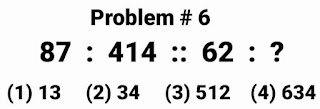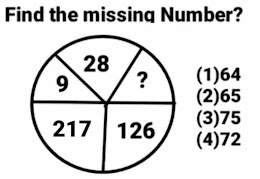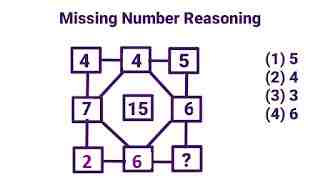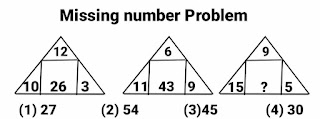Reasoning questions with answers for competitive exams
Ten Reasoning questions with answers for competitive exams
Problem # 1
This box problem consist of five rows and four columns . Here in this problem we have to find the value of question mark which is lying in 2nd column of fourth row after studying the pattern of all the numbers in this box.
Formula:-
3rd column
4th column
2nd column
Problem # 2
This box problem of reasoning consist of four rows and five columns . And we have to find the value of question mark which is lying in fourth row of fifth column after studying the pattern of all the numbers in this box.



.jpg)











































